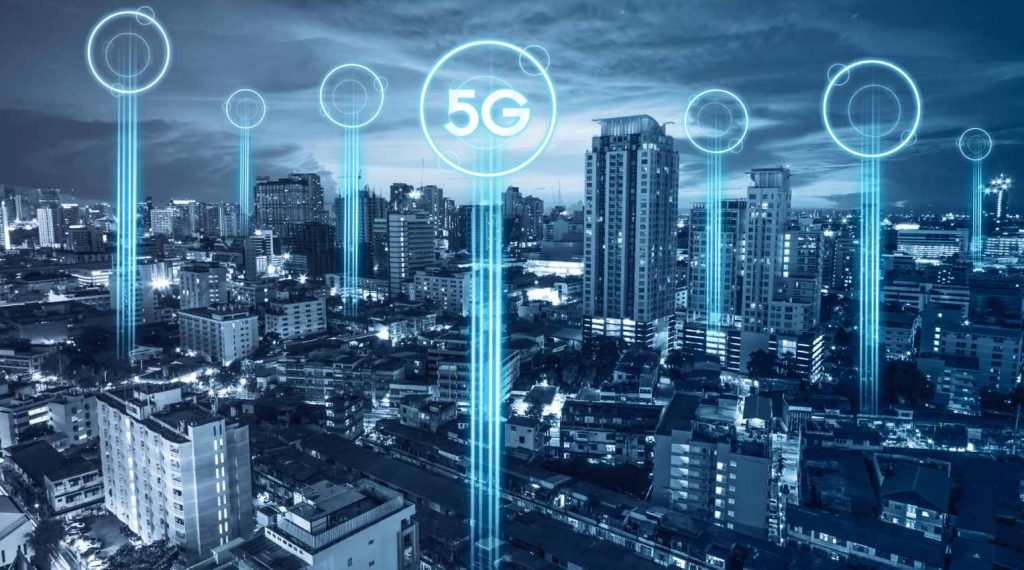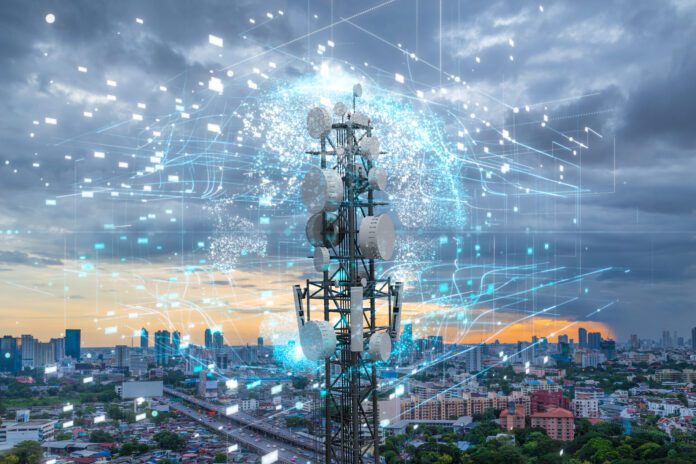The Dawn of a New Era: Exploring the Transformative Power of 5G Technology
In the realm of technological advancement, 5G technology stands as a beacon of innovation, promising to revolutionize communication, connectivity, and the very fabric of our digital lives. This essay delves into the intricacies of 5G technology, its implications for various sectors, potential benefits, and the challenges it presents.

Understanding 5G: Beyond Speed
5G, the fifth generation of wireless technology, extends beyond its predecessor’s speed capabilities. While it offers significantly faster data rates, its true power lies in its low latency and massive device connectivity. 5G’s ability to handle a multitude of devices simultaneously, with near-instant response times, paves the way for groundbreaking applications across industries.
Applications Across Sectors
The impact of 5G spans diverse sectors. In healthcare, telemedicine and remote surgeries become more feasible due to low latency and high reliability. In manufacturing, the Internet of Things (IoT) flourishes as machines communicate seamlessly in real-time. In smart cities, autonomous vehicles navigate congested streets with unmatched precision.
Empowering Innovation and Economies
5G’s transformative potential extends to fostering innovation and driving economic growth. Startups can leverage 5G’s capabilities to develop novel applications, while established industries can optimize processes and explore new revenue streams. The proliferation of 5G will likely lead to the creation of new job roles, from network engineers to app developers.
Addressing Challenges: Infrastructure and Security
While 5G holds immense promise, challenges remain. Establishing the necessary infrastructure, including a dense network of small cells, presents logistical and financial hurdles. Security concerns regarding the vulnerability of a highly interconnected ecosystem must be addressed. Collaboration between governments, industries, and researchers is paramount to ensure the responsible deployment of 5G technology.
5G Technology and the Connectivity Revolution: A Paradigm Shift in Communication
The advent of 5G technology marks a significant leap in the evolution of communication, promising to reshape how we interact, collaborate, and exchange information. This essay explores the far-reaching impact of 5G on communication, its potential to bridge digital divides, and the implications for society at large.
Enhancing Connectivity and User Experience
5G’s high-speed data transmission and low latency redefine communication. Video calls become seamless, even in crowded networks. Augmented and virtual reality experiences are enriched, revolutionizing remote collaboration and entertainment. The seamless connectivity of 5G bridges geographical gaps, fostering a global community.
Bridging the Digital Divide
5G’s potential to bridge the digital divide is noteworthy. Its ability to provide high-speed internet access to remote and underserved areas democratizes access to information and education. Virtual classrooms, telemedicine, and e-governance become accessible, narrowing the gap between urban and rural populations.
Societal and Cultural Transformations
5G’s impact transcends technology, influencing societal and cultural norms. Real-time language translation fosters cross-cultural understanding. Social interactions become more immersive through augmented reality filters and holographic communication. The evolution of communication brought by 5G challenges traditional notions of distance and presence.
Ethical Considerations and Future Prospects
As 5G transforms communication, ethical considerations arise. Balancing data privacy and the potential for surveillance requires robust regulations. Misinformation and deepfakes pose new challenges in an era of hyper-realistic communication. The future holds prospects for further integration with AI, enabling context-aware and personalized communication.

5G Technology and Industry Evolution: Reshaping Business Landscapes
5G technology, with its promise of ultra-fast connectivity and low latency, is poised to reshape industries and redefine business processes. This essay delves into the ways 5G is driving industrial evolution, enabling smart manufacturing, enabling IoT applications, and enhancing operational efficiency.
Smart Manufacturing and IoT
5G’s impact on manufacturing is profound. The Industrial Internet of Things (IIoT) thrives on 5G’s ability to connect a multitude of sensors and devices in real-time. Smart factories optimize processes through predictive maintenance and real-time monitoring. The combination of 5G and AI facilitates autonomous production lines.
Remote Operations and Real-time Insights
5G technology facilitates remote operations across industries. In sectors like energy and utilities, workers can control infrastructure remotely, minimizing risks. Real-time data streaming enhances decision-making, from logistics optimization to supply chain management. Remote collaboration using augmented reality expedites problem-solving.
Entrepreneurship and Innovation
5G’s role in accelerating entrepreneurship cannot be understated. Startups and small businesses can leverage 5G’s capabilities to develop innovative solutions. From connected wearable devices to immersive experiences, 5G opens avenues for disruptive ideas to flourish. This fosters competition, driving industries towards continuous innovation.
Challenges and Collaborative Solutions
While the potential of 5G is vast, challenges persist. Building a reliable 5G infrastructure demands substantial investment. Ensuring security and privacy in a highly connected ecosystem is paramount. Cross-industry collaborations and partnerships between governments and private enterprises are pivotal to overcoming these challenges and fully realizing 5G’s potential.
5G Technology and the Future Urban Landscape: Building Smart Cities
The emergence of 5G technology is intrinsically tied to the vision of smart cities, where connectivity, efficiency, and sustainability converge. This essay explores how 5G is a cornerstone of the smart city revolution, influencing urban planning, enhancing citizen services, and redefining urban living.
Enabling Smart Infrastructure
5G’s high-speed connectivity and low latency are vital for the proliferation of smart city infrastructure. Traffic management, waste disposal, and energy distribution systems become interconnected and responsive. Smart grids optimize energy consumption, and real-time data drives efficiency in resource allocation.
Citizen Services and Quality of Life
5G transforms citizen services, making them more efficient and personalized. Smart streetlights adjust brightness based on foot traffic, saving energy. Real-time public transportation data enhances commuting experiences. Healthcare services become remote and accessible, improving quality of life for residents.
Innovative Urban Experiences
The integration of 5G with emerging technologies shapes innovative urban experiences. Augmented reality wayfinding guides tourists through cities. Public spaces come alive with interactive installations. Self-driving vehicles navigate seamlessly, reducing traffic congestion and pollution.
Sustainability and Challenges Ahead
5G plays a pivotal role in achieving urban sustainability. Reduced energy consumption in smart infrastructure aligns with environmental goals. However, the deployment of 5G networks requires careful planning to minimize their environmental impact. Collaboration among city planners, technology providers, and environmentalists is essential to strike a balance between technological progress and ecological responsibility.
